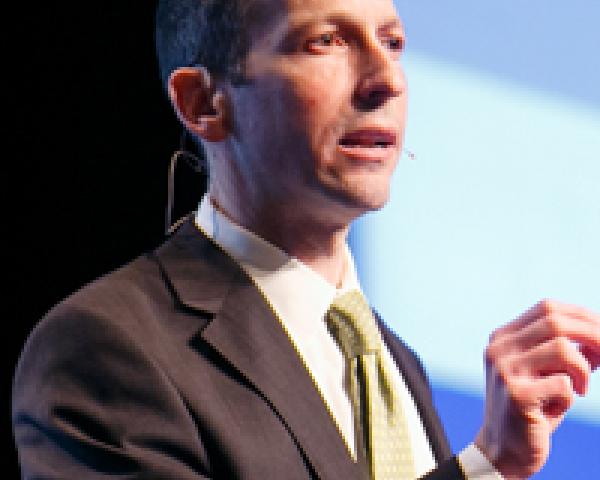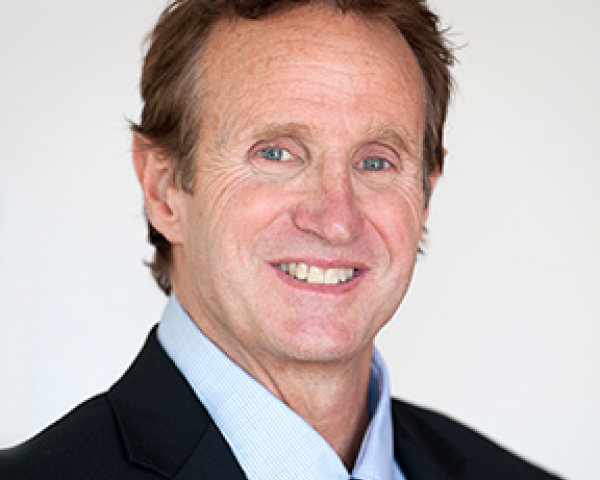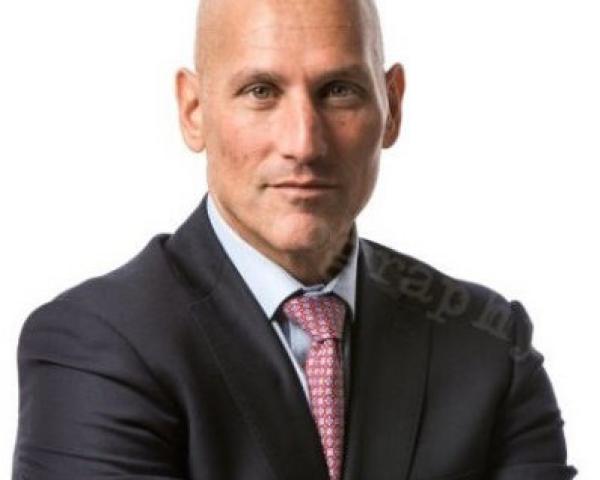The Big Problem With Certificates
Certificates of insurance are expensive, ticking time bombs creating confusion and cost at best, soiled reputation and financial ruin at worst.

Certificates of insurance are expensive, ticking time bombs creating confusion and cost at best, soiled reputation and financial ruin at worst.

Get Involved
Our authors are what set Insurance Thought Leadership apart.
|
Partner with us
We’d love to talk to you about how we can improve your marketing ROI.
|

Chet Gladkowski is an adviser for GoKnown.com which delivers next-generation distributed ledger technology with E2EE and flash-trading speeds to all internet-enabled devices, including smartphones, vehicles and IoT.
Insurers could only answer 28% of queries across digital channels, and 14% failed to respond successfully on either email, social media or chat.

Get Involved
Our authors are what set Insurance Thought Leadership apart.
|
Partner with us
We’d love to talk to you about how we can improve your marketing ROI.
|

Olivier Njamfa has more than 25 years of experience in digital technologies and software industry all around the world. Today, Njamfa is an expert in digital customer engagement solutions supported by linguistics and cognitive technologies.
Before we set the drones to fly, machine learning and AI need to be adopted into mainstream core software platforms.

Get Involved
Our authors are what set Insurance Thought Leadership apart.
|
Partner with us
We’d love to talk to you about how we can improve your marketing ROI.
|

Christopher Fernandes has worked for insurance companies managing business operations as part of start-up functions. Fernandes subsequently moved to the technology consulting area, helping insurance and healthcare companies improve process controls and innovate business operations over the last 16 years.
The consumer experience is a funnel, and personalization can be applied to each touch-point in the funnel.

Get Involved
Our authors are what set Insurance Thought Leadership apart.
|
Partner with us
We’d love to talk to you about how we can improve your marketing ROI.
|

Seth Birnbaum is the CEO and co-founder of <a href="http://www.everquote.com">EverQuote</a>, the largest online auto insurance marketplace in the U.S. EverQuote has been named to Inc. 5000 list of Fastest-Growing Private Companies for three years in a row and has over $100 million in revenue—with three-year revenue growth of 208%.
Put on your contrarian hat for a moment. Think of all the bad things that could happen if your staff focused, to a fault, on the goal you’ve set.

Get Involved
Our authors are what set Insurance Thought Leadership apart.
|
Partner with us
We’d love to talk to you about how we can improve your marketing ROI.
|

Jon Picoult is the founder of Watermark Consulting, a customer experience advisory firm specializing in the financial services industry. Picoult has worked with thousands of executives, helping some of the world's foremost brands capitalize on the power of loyalty -- both in the marketplace and in the workplace.
What Walmart is doing is a huge step forward in truly controlling waste, overtreatment and misdiagnoses in health plans.

Get Involved
Our authors are what set Insurance Thought Leadership apart.
|
Partner with us
We’d love to talk to you about how we can improve your marketing ROI.
|

Tom Emerick is president of Emerick Consulting and cofounder of EdisonHealth and Thera Advisors. Emerick’s years with Wal-Mart Stores, Burger King, British Petroleum and American Fidelity Assurance have provided him with an excellent blend of experience and contacts.
Just as insurers must innovate, they must acknowledge risk, assess risk, mitigate risk and prepare for some level of risk to materialize.

Get Involved
Our authors are what set Insurance Thought Leadership apart.
|
Partner with us
We’d love to talk to you about how we can improve your marketing ROI.
|

Donna Galer is a consultant, author and lecturer.
She has written three books on ERM: Enterprise Risk Management – Straight To The Point, Enterprise Risk Management – Straight To The Value and Enterprise Risk Management – Straight Talk For Nonprofits, with co-author Al Decker. She is an active contributor to the Insurance Thought Leadership website and other industry publications. In addition, she has given presentations at RIMS, CPCU, PCI (now APCIA) and university events.
Currently, she is an independent consultant on ERM, ESG and strategic planning. She was recently a senior adviser at Hanover Stone Solutions. She served as the chairwoman of the Spencer Educational Foundation from 2006-2010. From 1989 to 2006, she was with Zurich Insurance Group, where she held many positions both in the U.S. and in Switzerland, including: EVP corporate development, global head of investor relations, EVP compliance and governance and regional manager for North America. Her last position at Zurich was executive vice president and chief administrative officer for Zurich’s world-wide general insurance business ($36 Billion GWP), with responsibility for strategic planning and other areas. She began her insurance career at Crum & Forster Insurance.
She has served on numerous industry and academic boards. Among these are: NC State’s Poole School of Business’ Enterprise Risk Management’s Advisory Board, Illinois State University’s Katie School of Insurance, Spencer Educational Foundation. She won “The Editor’s Choice Award” from the Society of Financial Examiners in 2017 for her co-written articles on KRIs/KPIs and related subjects. She was named among the “Top 100 Insurance Women” by Business Insurance in 2000.
The traditional, incumbent part of the industry is now actively participating in insurtech. Let's call the phenomenon MatureTech.

The insurtech phenomenon reached new heights at the InsureTech Connect 2016 event in Las Vegas in October. More than 1,600 attendees spent two days absorbing new ideas, connecting and making followup plans to explore working together.
I’ve participated in many of the insurtech and emerging tech (in insurance) events over the last couple years, but I have recently noticed a distinct shift. Most of the initial events included insurtech startups, investors and industry consultants and influencers. The focus was all on the “new” – exciting new ideas, developments and companies that were poised to transform the insurance industry. While a few insurance executives participated, the vast majority of people with insurance business cards were representing the venture capital arms of the companies. Recently, there has been a dramatic shift in the participants in everything insurtech. Companies and individuals representing the traditional, incumbent part of the industry are now actively participating. So, I am going to coin a term here: I’m calling this group MatureTech.
Insurance executives leading key parts of the business, driving innovation and creating strategies are now involved in force, representing all sizes of companies and all lines of business. Incumbent tech players are on the scene, as well. While there have been a few leaders involved in some of the early events and insurtech activities, there has now been a ramp-up of participation from these companies.
See also: 8 Exemplars of Insurtech Innovation
This blending of the old and new is, in fact, a great development. Our central theme at SMA has been the need to bridge from today’s insurance company to the Next-Gen Insurer of the future. And it is really much more about transition and adaptation than disruption. This is not meant to downplay, in any way, the revolutionary ideas, new business models and innovative products and services emanating from the insurtech world. But there are some fundamental realities about the insurance business and operations that make it difficult to change overnight. Insurance is complex and highly regulated, especially once you get beyond the personal/individual products. Some of the key themes emerging that show how insurtech and MatureTech are beginning to blend are the following:
See also: Calling all insurtech companies – Innovator’s Edge delivers marketing muscle and social connections
There is no doubt that the world of insurance is changing. There is an open debate about how rapidly that will occur and what parts of the business will be most affected. But one thing is for sure. Bringing together the strengths of the existing insurance world with the emerging new approaches is inevitable, and it is beginning to happen. And as insurtech collides with MatureTech, insurers must develop bridging strategies to become Next-Gen Insurers and capitalize on the opportunities ahead.
Get Involved
Our authors are what set Insurance Thought Leadership apart.
|
Partner with us
We’d love to talk to you about how we can improve your marketing ROI.
|

Mark Breading is a partner at Strategy Meets Action, a Resource Pro company that helps insurers develop and validate their IT strategies and plans, better understand how their investments measure up in today's highly competitive environment and gain clarity on solution options and vendor selection.
The absence of risk profiling in most commercial insurance transactions globally leads to under-insurance or non-insurance.

 See also: Digital Risk Profiling Transforms Insurance
With low-cost online digital risk profiling now available for business insurance, there is a wonderful opportunity for the insurance industry and advisers to better match insurance coverages with actual client risk through documented risk profiles, reducing the instances of under-insurance or non-insurance and the potential for negligent advice claims.
See also: Digital Risk Profiling Transforms Insurance
With low-cost online digital risk profiling now available for business insurance, there is a wonderful opportunity for the insurance industry and advisers to better match insurance coverages with actual client risk through documented risk profiles, reducing the instances of under-insurance or non-insurance and the potential for negligent advice claims.
Get Involved
Our authors are what set Insurance Thought Leadership apart.
|
Partner with us
We’d love to talk to you about how we can improve your marketing ROI.
|

Peter Blackmore is a founder of Risk Advisor, which has established a fully operational interactive digital platform that makes risk management easy for small to medium-sized enterprises around the world. He has been a strategic risk adviser for many years.
A great inaugural event, but to a large extent insurtech innovation is not yet focused enough on the core industry issues.

Get Involved
Our authors are what set Insurance Thought Leadership apart.
|
Partner with us
We’d love to talk to you about how we can improve your marketing ROI.
|

Andrew Robinson is an insurance industry executive and thought leader. He is an executive in residence at Oak HC/FT, a premier venture growth equity fund investing in healthcare information and services and financial services technology.